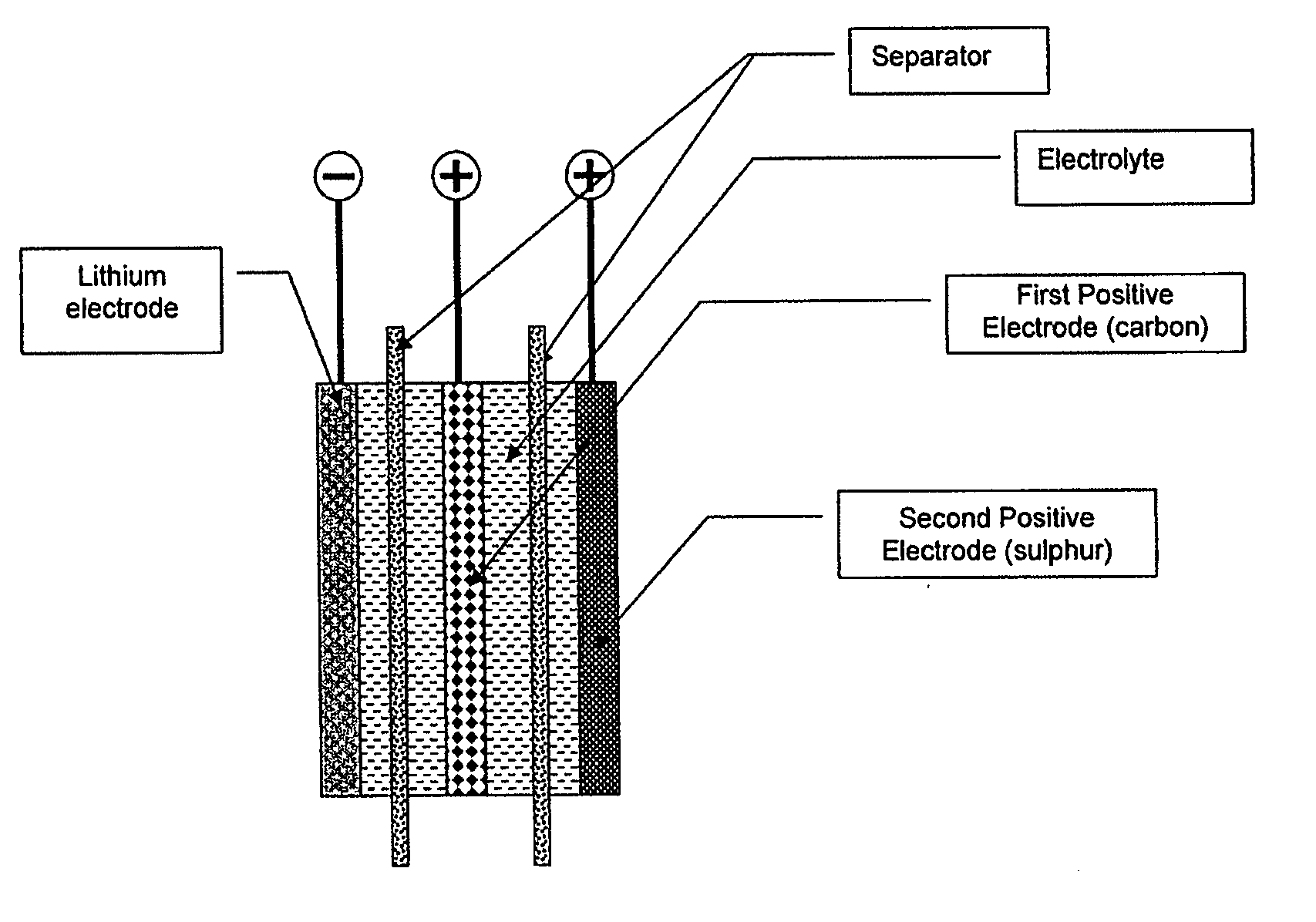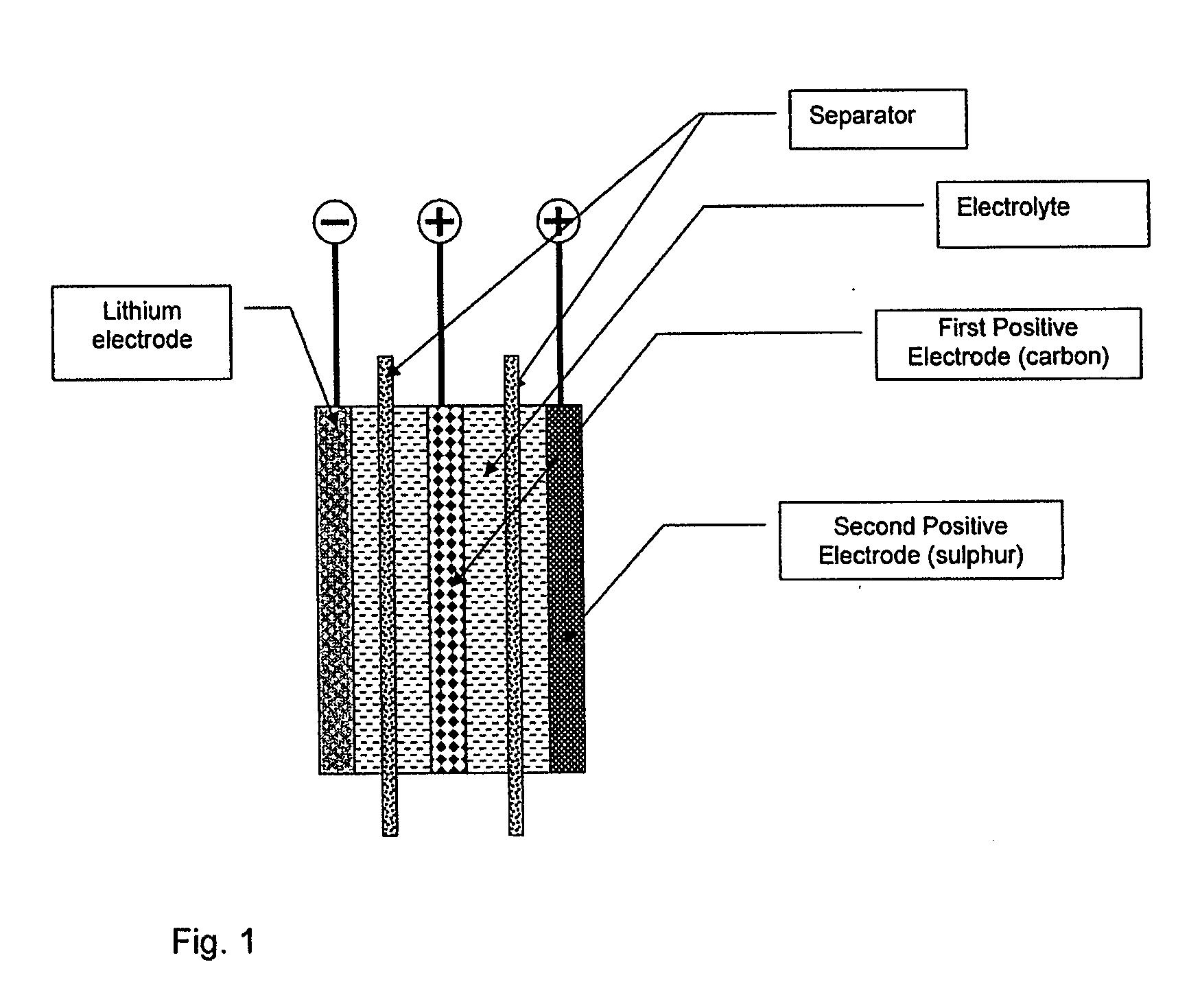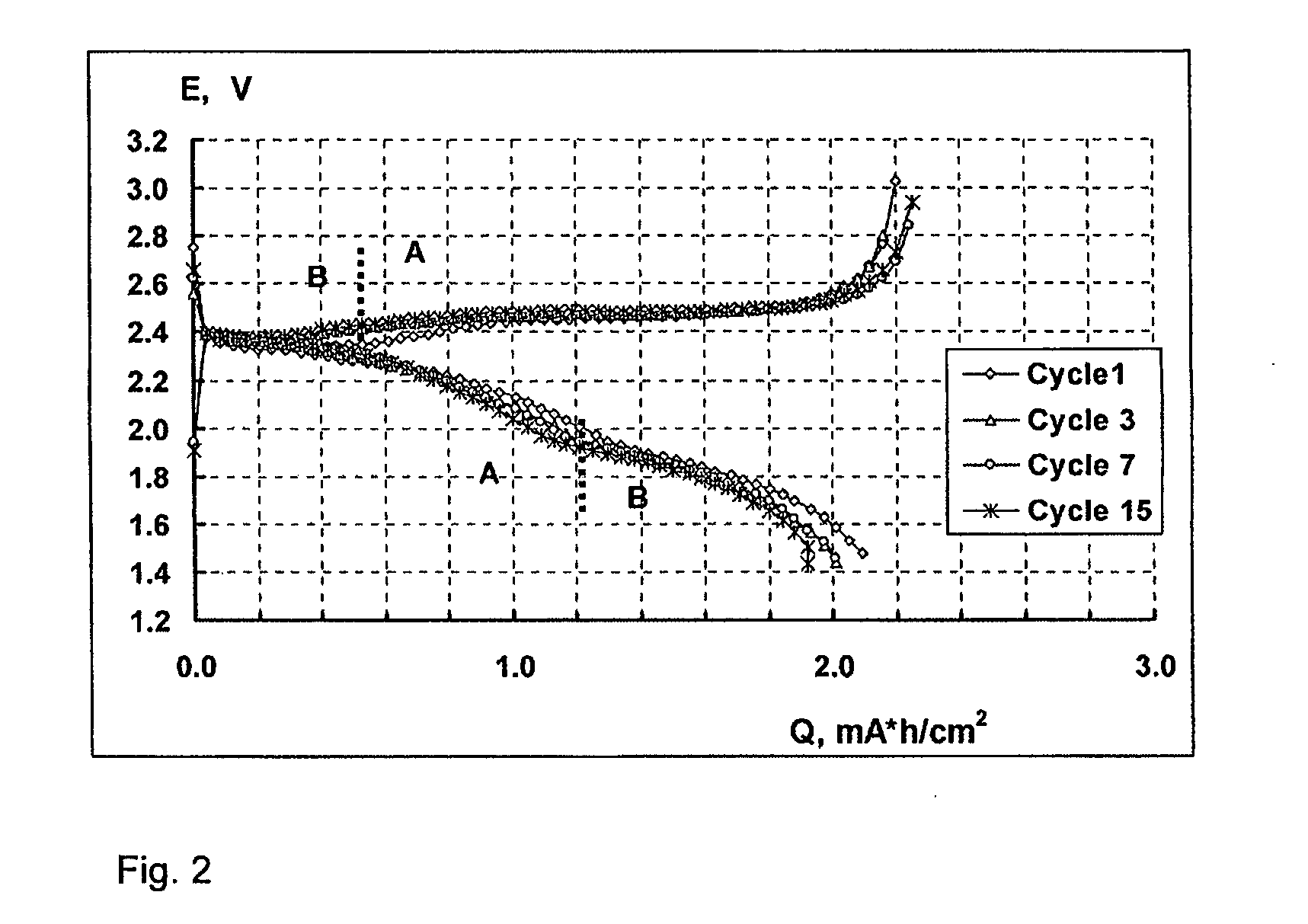Lithium-sulphur battery with a high specific energy and a method of operating same
a lithium sulphur battery and high specific energy technology, applied in the direction of secondary cell servicing/maintenance, cell components, sustainable manufacturing/processing, etc., can solve the problems of high specific energy, complex process of elemental sulphur reduction to lithium polysulphide, and low specific energy of elemental sulphur. achieve the effect of increasing the specific energy
- Summary
- Abstract
- Description
- Claims
- Application Information
AI Technical Summary
Benefits of technology
Problems solved by technology
Method used
Image
Examples
example 1
[0058] An electrode comprising 90% of carbon and 10% of polytetrafluorethylene (PTFE) as a binder was produced as follows:
[0059] 200 ml of isobutanol were added to 10 ml of 50% water suspension of polytetrafluorethylene (PTFE) and mixed carefully to obtain a homogeneous semitransparent white gel. 45 g of carbon black (Ketjenblack® EC-600JD, available from Akzo Nobel Polymer Chemicals BV, Netherlands) were put into an agate mortar. This gel was added to the carbon black and ground carefully to produce a homogeneous plastic slurry. Strips of 50 microns thick and 40 mm wide were fabricated from this slurry and it further pressurised on a roller press. Two such carbon strips were soaked in isobutanol for 30 minutes. These soaked carbon strips were used for making a carbon electrode by putting an aluminium grid between the strips and by further pressurising this stack in a roller press. The thickness of the resulting electrode was 100 microns, and its porosity was 84%.
example 2
[0060] A positive electrode comprising 80% sublimated sulphur (available from Fisher Scientific, Loughborough, UK), 10% electro-conductive carbon black (Ketjenblack® EC-600JD, available from Akzo Nobel Polymer Chemicals BV, Netherlands) and 10% polytetrafluorethylene (PTFE) as a binder was produced as follows.
[0061] A mixture of dry components (carbon and sulphur) in mass ratio 1:8 was ground in a high-speed mill Microtron MB550 for 10-15 minutes. 200 ml of isobutanol was added to 10 ml of an aqueous suspension of polytetrafluorethylene (PTFE) and mixed carefully to obtain a homogeneous semitransparent white gel. 45 g of sulphur and carbon ground mixture was placed into an agate mortar. A PTFE gel thus produced was added to this mixture of dry substances and carefully ground to make a homogeneous plastic slurry. Carbon strips of 50 microns thick and 40 mm wide were fabricated from this slurry using a roller press. Then two carbon strips were put into isobutanol for 30 minutes for s...
example 3
[0062] The sulphur electrode from Example 2 was used in a small laboratory cell embedded in a stainless steel housing. The surface area of the electrodes was about 5 cm2. The sulphur electrode was dried out in vacuum at +50 degrees Celsius for 24 hours. A Celgard® 3501 separator was used as a porous separator (a Trade Mark of Tonen Chemical Corporation, Tokyo, Japan, also available from Mobil Chemical Company, Films Division, Pittsford, N.Y.). A 38 microns thick lithium foil (Chemetall, Inc, USA) was used for the negative electrode. A 1.0M solution of lithium trifluoromethanesulfonate (available from 3M Corporation, St. Paul, Minn.) in sulfolane was used as an electrolyte.
[0063] The cell was assembled in the following way. The preliminary dried sulphur electrode was placed into the stainless steel housing. The electrolyte was deposited onto the electrode by a syringe in the quantity necessary for complete soaking. Then the separator was placed onto the electrode. The electrolyte wa...
PUM
 Login to View More
Login to View More Abstract
Description
Claims
Application Information
 Login to View More
Login to View More - R&D
- Intellectual Property
- Life Sciences
- Materials
- Tech Scout
- Unparalleled Data Quality
- Higher Quality Content
- 60% Fewer Hallucinations
Browse by: Latest US Patents, China's latest patents, Technical Efficacy Thesaurus, Application Domain, Technology Topic, Popular Technical Reports.
© 2025 PatSnap. All rights reserved.Legal|Privacy policy|Modern Slavery Act Transparency Statement|Sitemap|About US| Contact US: help@patsnap.com



